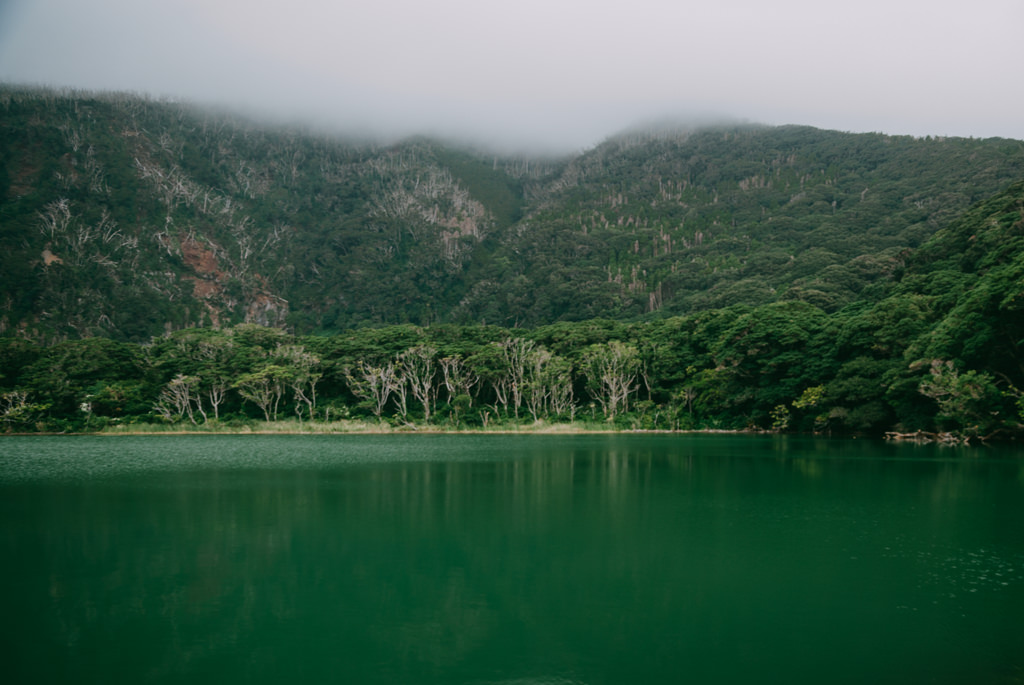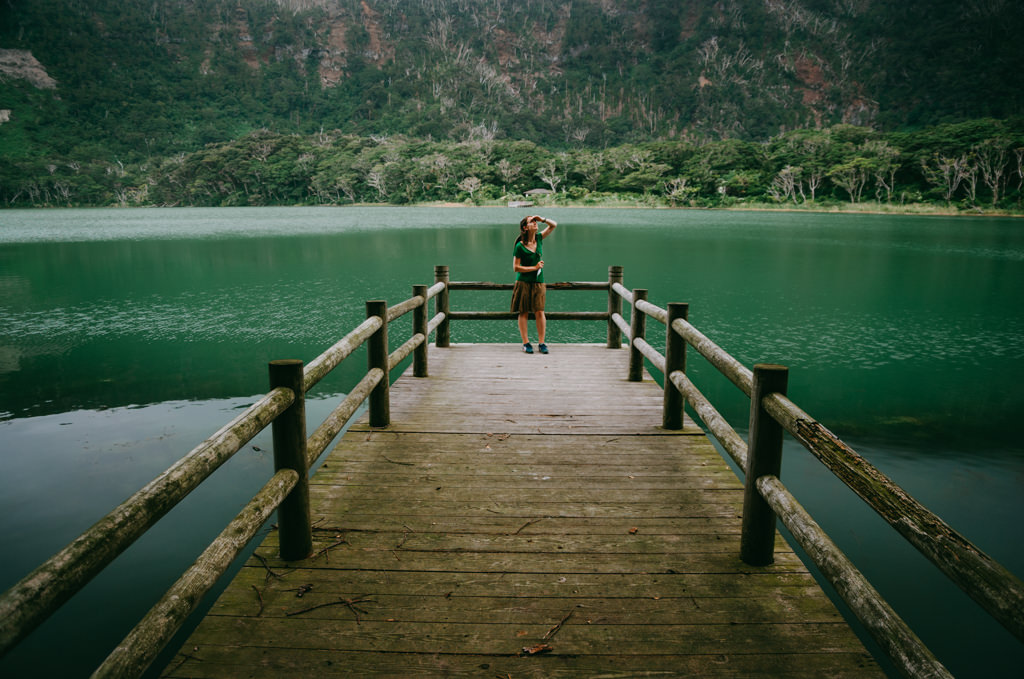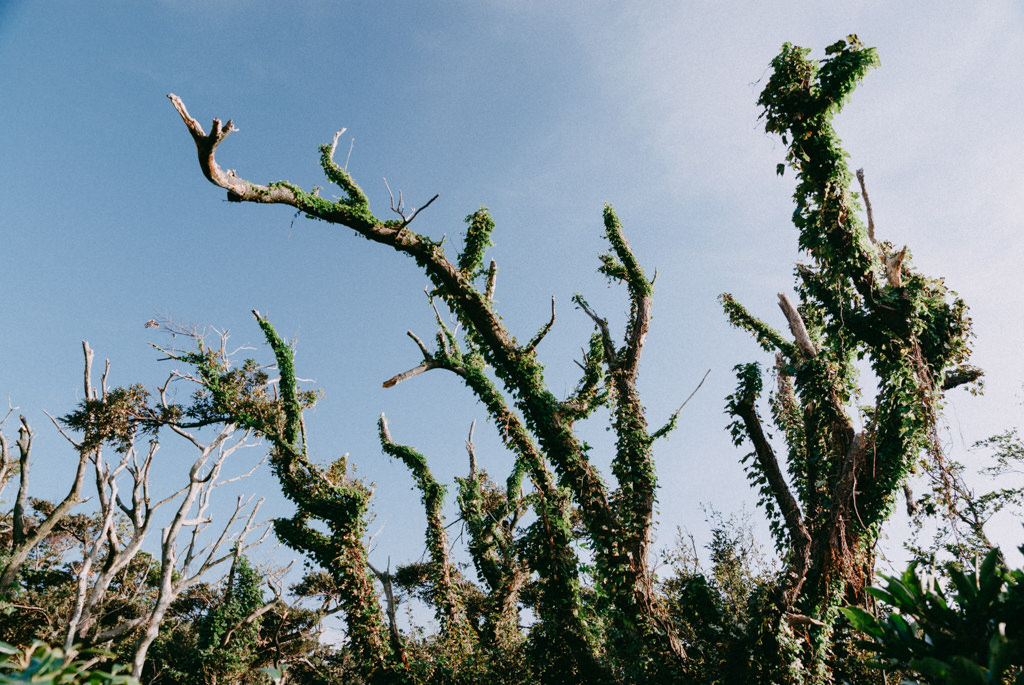
Miyakejima Island of the Izu Islands
Miyakejima Island has a large active volcano called Mt. Oyama, which has erupted several times in recent history. The last eruption was in 2000, which resulted in the evacuation of its entire population until 2005. Today many tourists visit Miyakejima for fishing, diving and bird watching. Large amounts of volcanic rock formed by the lava flows of the 2000 eruption are still visible, and part of the area close to the volcano is still a no-entry zone. It is interesting to see the re-growth after the eruption, and there are still many unaffected areas covered by lush, beautiful forest. Birds are returning to this island as the volcanic activity is ceasing. There is a lovely bird sanctuary called Tairo-ike (Miyakejima used to be called “Bird Island” as there are many birds coming from the north and south pacific).
The beaches of Miyakejima are beautiful but they are made of black volcanic sand. The sea of Miyakejima is more popular for diving rather than snorkeling for this reason. Swimming with dolphins is also a popular activity, and tour boats usually go close to Mikurajima. Divers are attracted to this island because of the many different kinds of fish, coral, sea turtles and interesting underwater landscapes. There are coral reefs formed by table coral and other kinds of tropical hard coral, located off the south west and south side of Miyakejima. They are often referred to as the world’s most northern points for tropical coral reefs.
About the Tokyo/Izu Islands:
Apart from the Ogasawara Islands, the Tokyo Islands (also known as the Izu Seven Islands) are a great weekend getaway for Tokyo locals. Usually people aim for the Friday night overnight passenger ferry which arrives early on Saturday mornings, where they can enjoy nature activities for the weekend. It is usual to take the high-speed jet ferry on the return to Tokyo on Sunday afternoons, or a flight depending on the island. All these islands of Tokyo are excellent for anglers of all skill levels as the surrounding sea is very rich in fish due to the Kuroshio Current and rugged underwater topography.
PrefectureTokyoSize55 sq kmPopulationApproximately 2,700AccessOvernight ferry from Tokyo (6.5 hours)Getting aroundCar rental or bus


